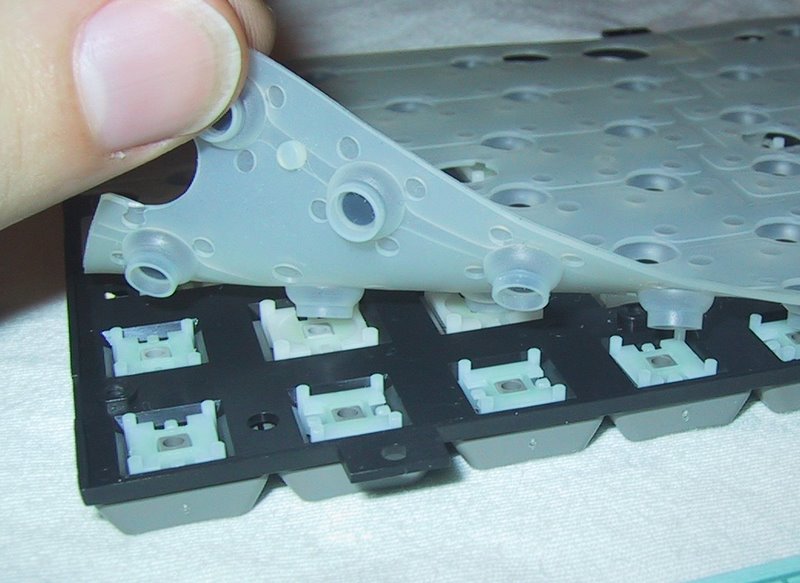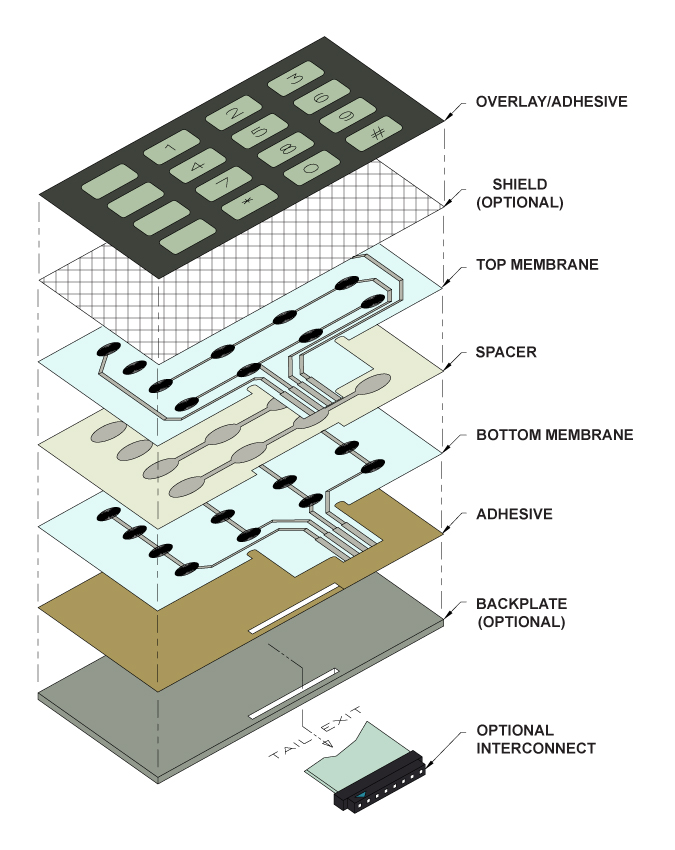Membrane Switches vs. Mechanical Switches: What You Need to Understand
Membrane Switches vs. Mechanical Switches: What You Need to Understand
Blog Article
Why Membrane Layer Changes Are Essential for Sturdy Control Solution
Membrane buttons play a crucial role in ensuring the sturdiness and reliability of control systems throughout different industries. Their unique building enables them to endure tough environmental variables such as humidity, temperature level extremes, and physical wear. This strength not just extends the life expectancy of the systems they offer but likewise lessens upkeep requirements. As we discover the complex advantages of membrane layer buttons, it becomes apparent that their value transcends plain capability, affecting user experience and operational efficiency. What further ramifications do these attributes hold for the future of control system layout?
Summary of Membrane Layer Buttons
Membrane buttons are functional and dependable components typically used in different electronic control systems. These switches include several layers, including a visuals overlay, a spacer layer, and a published circuit layer. The visuals overlay offers both functional and visual layout, while the spacer layer makes sure that the switches are activated just when pushed. The printed circuit layer consists of conductive traces that finish an electric circuit when the membrane is pushed, making it possible for the gadget to react to individual inputs.
Membrane switches are often preferred in applications needing a compact and lightweight style, making them optimal for handheld tools, medical devices, and industrial equipment. They can be tailored to satisfy particular user demands and can include different attributes such as backlighting, responsive responses, and several colors. Furthermore, membrane layer switches are resistant to dust, moisture, and pollutants, making them ideal for atmospheres where durability is crucial.
Benefits of Longevity
In numerous applications, the toughness of membrane switches over deals substantial benefits that improve their total efficiency and dependability. These switches are developed to hold up against severe environments, making them excellent for use popular problems such as high humidity, extreme temperatures, and exposure to chemicals. Their robust building and construction assists to avoid damage from physical impact, making sure lasting functionality and minimizing the demand for constant replacements.
Additionally, membrane layer buttons are resistant to damage, which is vital in applications where constant interaction happens. This resilience converts to reduce maintenance prices, as companies benefit from minimized downtime and less solution disturbances. The encapsulated layout of membrane switches shields interior components from dirt and dampness ingress, additional adding to their life-span (membrane switch).
An additional advantage is their capacity to maintain constant performance gradually. With a high resistance for mechanical anxiety, these switches maintain their tactile responses and electrical stability, guaranteeing individual contentment. Eventually, the toughness of membrane switches not only boosts functional effectiveness but additionally cultivates confidence in their integrity, making them a favored selection for control systems across numerous industries.
Applications in Numerous Industries
Durable control systems utilizing membrane switches locate extensive applications across a variety of industries, each gaining from the distinct qualities these switches offer. In the medical sector, membrane layer switches are critical for gadgets such as patient monitors and diagnostic devices, where dependability and simplicity of cleansing are extremely important. Their resistance to dampness and impurities ensures they maintain performance in sterilized environments.
The automobile sector leverages membrane layer switches for control panel controls and infotainment systems, where they supply streamlined, low-profile user interfaces that enhance user experience. These buttons are also made to stand up to harsh conditions, including direct exposure to extreme temperature levels and vibrations.
In industrial settings, membrane buttons are typically used in machinery control panels, providing tactile comments and durability required for high-usage applications. Their capability to stand up to chemicals makes them ideal for manufacturing settings where spills and contaminants are regular.

Customer electronic devices, such as cooking area devices and remotes, also use membrane switches for their flexibility and cost-effectiveness. Generally, the versatility and durable nature of membrane switches over make them indispensable throughout numerous fields, making sure reliable operation and long life in control systems.
Design and Visual Charm
While functionality is vital, more tips here the layout and visual charm of control systems outfitted with membrane layer buttons play a crucial duty in user engagement and overall experience (membrane switch). The visual design of these buttons can substantially affect individual assumption and communication. A properly designed membrane switch improves the attractiveness of the device, making it much more enticing to customers and promoting a connection between the customer and the item
Membrane switches use a great offer of versatility in design, permitting makers to customize graphics, shades, and textures to align with brand identity and item visual appeals. The use of dynamic colors and distinctive patterns can draw focus, while tactile comments can strengthen the customer's interaction with the tool. Additionally, the ability to integrate LED indicators and backlighting into the membrane layer switch design supplies both practical and aesthetic advantages, enhancing presence and usability in numerous atmospheres.

Enhancing Customer Experience

Furthermore, membrane layer switches can be personalized to include visual user interfaces, boosting usability by presenting information in a clear and instinctive fashion (membrane switch). This modification can consist of icons, labels, and shade coding that guide users through complicated functionalities easily. Furthermore, their flexibility permits for assimilation in various settings, guaranteeing regular efficiency whether in commercial machinery or consumer electronics
The durability of membrane switches additionally plays an important function in individual experience. By standing up to extreme conditions and extended use, these buttons decrease the chance of system failures, hence advertising reliability and customer self-confidence. Ultimately, the strategic use membrane layer switches not just boosts capability but additionally dramatically improves user interaction with control systems, making them an important component in modern design.
Verdict

Report this page